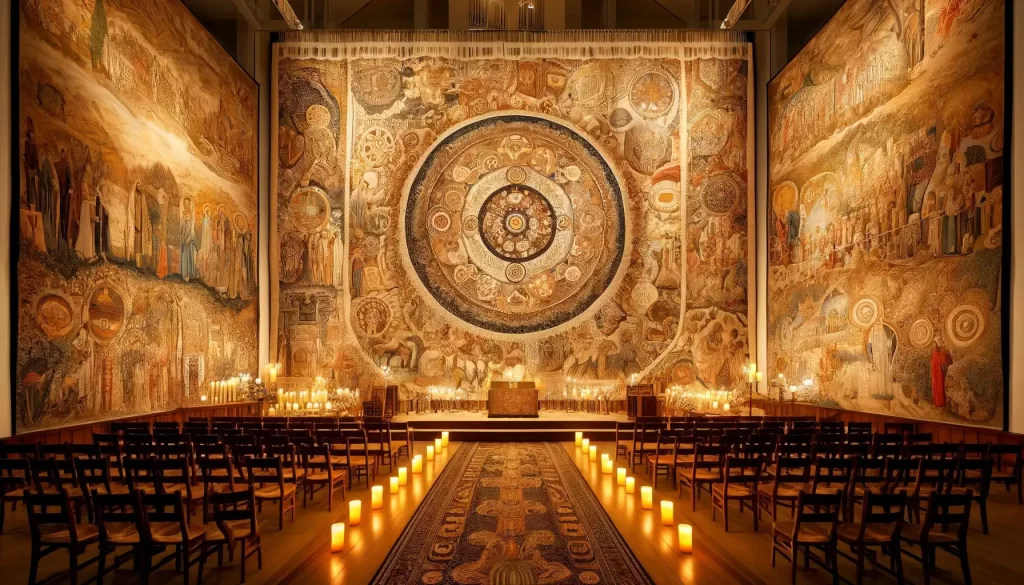
National Association of Christian Ministers Leadership Series
By Michael Mooney, Exec. Elder
Organizational Structure
Organizational structure refers to the way people within organizations relate to one another as friends, colleagues, employees, employers, managers, followers, leaders, pastors, parishioners, and directors. Organizations generally represent one of three structures: bureaucratic, boundaries, and flat. The bureaucratic structure is a popular approach to organization in militaries with its top-to-bottom approach to management (which usually comes in the form of many levels). The flat structure is relatively opposite to that of a bureaucracy because of its decentralized approach to management and far fewer levels of formal authority. The boundaryless structure is popular for its similarity to the flat structure and its emphasis on operations through teams and joint venture relationships (Gomez-Mejia, Balkin & Cardy, 2007). The church has been represented in all three forms of these structures thorough history.
Organizational Culture
Cultures within organizations hold close connections to their structures. Although cultures are usually unique to the organizations where they exist, there is a common similarity in that they represent expectations in organizational behavior, protocols, and goals. Cultures influence attitudes, ethics, quality, and performance; all of which ultimately determines turnover (whether that is employees leaving their jobs, or parishioners their churches). Therefore, culture is essential to both employee’s/parishioners roles and their motivation toward organizational goals. (Mahal, 2009).
Leadership Sets the Tone
The very essence of leadership is vision. Solomon, the ancient known for his wisdom, says: “Where there is no vision, the people perish” (Pro 29:18, KJV).
Definitive leadership usually consists of two commons:
1) a cooperating group, and
2) someone influencing the group toward a goal.
Areas where definitions of leadership differ are in relation to who are the influencers, their goals in influencing, and the way they are achieved (Takala, 1998).
Cultures within organizations receive definition and perpetuation by its leadership. For this reason, their behaviors will set the tone for future expectations in employee/employer-minister/parishioner relations. Role theory demonstrates that different people lead differently in accordance with diverse personalities. Therefore, culture is all the more important in maintaining regularity in the “spirit” of an organization’s structure. Such examples will prohibit an A-type personality from micromanaging employees in a decentralized environment. Therefore, organizational structure defines management roles, while organizational culture defines organizational attitudes (Shivers-Blackwell, 2006).
Organizational Influence of Knowledge
Culture also affects the way in which knowledge flows throughout an organization. People are the key ingredient in the handling and transferring of information. Therefore, people skills (soft skills) can be life or death to an organization’s structure. A good structure will encourage the empowerment of employees/parishioners in the areas of creativity, innovation, community, and open communication. A structure positioned for success will also show grace to mistakes made by employees/parishioners and encourage corrective decision-making by the people who make them. This approach is likely to reduce the temptation to hide valuable information from leadership (Girdauskienė & Savanevičienė, 2007).
Servant Structure
Jesus of Nazareth demonstrated a profound leadership model, saying: “He that is greatest among you shall be your servant” (Mat 23:11, KJV). This approach can set an excellent culture in any organization (irrespective of formal structure). In such an environment, both employers/pastors and employees/parishioners would see themselves as facilitators to one another, as well as their mission.
Edgar Schein defines the concept of “organizational culture” as a collection of shared beliefs, ideas, and assumptions that are learned and developed during fellowship with a group while solving a shared obstacle. Because of the perceived successful outcomes, they consider their approach valid, and worthy to be taught to new members as an appropriate way to think, feel, and respond to similar obstacles.
References
Girdauskienė, L., & Savanevičienė, A. (2007). Influence of Knowledge Culture on Effective
Knowledge Transfer. Engineering Economics, 54(4), 36-43. Retrieved from Business Source Complete database.
Gomez-Mejia, L.R., Balkin, D.B., & Cardy, R.L. (2007). Managing human resources (5th ed).
Upper Saddle River, NJ: Prentice-Hall.
Mahal, P. (2009). Organizational Culture and Organizational Climate as a Determinant of
Motivation. IUP Journal of Management Research, 8(10), 38-51. Retrieved from Business Source Complete database.
Schein, Edgar. 1993. Organizational Culture and Leadership. In Classics of Organization Theory. Jay Shafritz and J. Steven Ott, eds. 2001. Fort Worth: Harcourt College Publishers.
Shivers-Blackwell, S. (2006). The Influence of Perceptions of Organizational Structure &
Culture on Leadership Role Requirements: The Moderating Impact of Locus of Control & Self-Monitoring. Journal of Leadership & Organizational Studies (Baker College), 12(4), 27-49. Retrieved from Business Source Complete database.
Takala, T. (1998). Plato on Leadership. Journal of Business Ethics, 17(7), 785-798. Retrieved
from Business Source Complete database.




